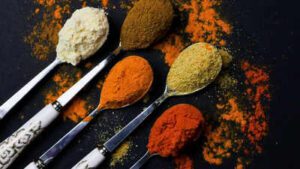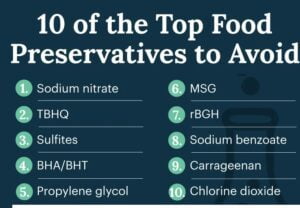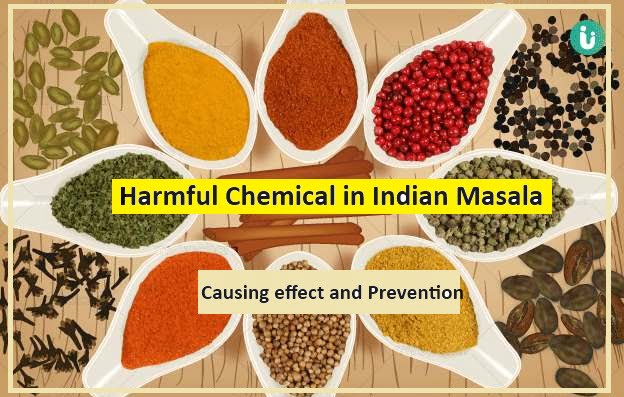Updates of Harmful Chemical In Indian Masala
- Recently, the uproar about MDH and Everest masalas, which are said to contain ethylene oxide as per reports
- Ethelene Oxide Cancer causing chemical found in Indian Masala
- It has led to some of their masalas being banned in Singapore and Hong Kong.
- The chemical poses health risks, including carcinogenic properties and potential long-term health effects.
-
More harmful chemical in food : Advantages and Disadvantages of Food Preservatives or Chemicals

List of food preservatives in Indian Masala
- Food preservatives are used to extend the shelf life of spices and masalas by preventing spoilage caused by microorganisms.
- Here is a list of common food preservatives that might be found in Indian masalas:
- Sodium Benzoate: This is one of the most common preservatives used in various food products, including masalas. It prevents the growth of bacteria, yeast, and fungi.
- Potassium Sorbate: Often used in conjunction with sodium benzoate, potassium sorbate helps inhibit the growth of mold, yeast, and fungi.
- Sodium Metabisulfite: This preservative is used to prevent discoloration and maintain the freshness of the spices.
- BHA (Butylated Hydroxyanisole) and BHT (Butylated Hydroxytoluene): These antioxidants prevent oils and fats in the spices from becoming rancid.
- Calcium Propionate: This preservative is effective against mold and bacteria, extending the shelf life of masalas.
- Sodium Nitrate and Sodium Nitrite: These are less commonly used in masalas but may be found in some spice mixes that contain meat products to prevent bacterial growth.
- Citric Acid: Used to adjust the pH and act as a preservative by creating an environment that inhibits microbial growth.
- Ascorbic Acid (Vitamin C): An antioxidant that helps prevent the oxidation of spices and maintain their color and flavor.
- Tocopherols (Vitamin E): These are natural antioxidants used to prevent rancidity in spice blends that contain oils.
It’s important to check the ingredient labels of packaged masalas to know the exact preservatives used, as formulations can vary between manufacturers.

Side Effect of Harmful preservatives in Masala
Harmful preservatives in masalas (spice mixes) can have various side effects on health. Here are some common preservatives and their potential adverse effects:
- Sodium Benzoate:
- Side Effects: Allergic reactions, skin rashes, asthma attacks, and hyperactivity in children.
- Long-term Effects: May convert to benzene (a carcinogen) under certain conditions.
- Sodium Nitrate and Nitrite:
- Side Effects: Headaches, dizziness, nausea, and vomiting.
- Long-term Effects: Increased risk of cancer, particularly stomach and esophageal cancers.
- Sulfur Dioxide and Sulfites:
- Side Effects: Respiratory issues, asthma attacks, and allergic reactions.
- Long-term Effects: Gastrointestinal disturbances and potential risks for people with sulfite sensitivity.
- Butylated Hydroxyanisole (BHA) and Butylated Hydroxytoluene (BHT):
- Side Effects: Allergic reactions, hyperactivity, and headaches.
- Long-term Effects: Potential carcinogenic effects and liver and kidney damage.
- Propyl Gallate:
- Side Effects: Stomach and skin irritations, and potential allergic reactions.
- Long-term Effects: Potential carcinogenic effects and reproductive toxicity.
- Monosodium Glutamate (MSG):
- Side Effects: Headaches, flushing, sweating, and chest pain.
- Long-term Effects: Potential neurotoxic effects and exacerbation of symptoms in individuals with MSG sensitivity.
- Trans Fats (often used to preserve the texture and flavor of spices):
- Side Effects: Increase in LDL (bad) cholesterol and decrease in HDL (good) cholesterol.
- Long-term Effects: Higher risk of heart disease, stroke, and type 2 diabetes.
- Artificial Colors:
- Side Effects: Allergic reactions, hyperactivity in children, and asthma attacks.
- Long-term Effects: Potential links to cancer and other health issues.

How to minimize Harmful preservatives in Indian Masala
- To minimize exposure to harmful preservatives, consider the following tips:
- Read Labels: Check the ingredient list for preservatives and artificial additives.
- Choose Natural and Organic Products: These often contain fewer or no synthetic preservatives.
- Make Your Own Masala: Prepare spice blends at home using fresh, natural ingredients.
- Store Properly: Keep spices in airtight containers away from heat and moisture to extend their shelf life naturally.
Ethelene Oxide Cancer causing chemical found in Indian Masala
- Ethylene oxide is a chemical that has been used for sterilizing medical equipment and spices due to its effective antimicrobial properties.
- However, its presence in food products, including Indian masalas (spice mixes), is a serious concern due to its potential health risks.
Health Risks of Ethylene Oxide
- Carcinogenicity:
- Cancer Risk: Ethylene oxide is classified as a human carcinogen by various health agencies, including the International Agency for Research on Cancer (IARC) and the U.S. Environmental Protection Agency (EPA). Long-term exposure to ethylene oxide has been linked to an increased risk of cancers such as leukemia, lymphoma, and breast cancer.
- Reproductive and Developmental Toxicity:
- Reproductive Issues: Ethylene oxide exposure has been associated with reproductive and developmental problems, including miscarriages and developmental defects in offspring.
- Genotoxicity:
- DNA Damage: Ethylene oxide can cause mutations in DNA, leading to genetic damage which can contribute to the development of cancer and other genetic disorders.
- Respiratory Issues:
- Lung Damage: Inhalation of ethylene oxide can cause respiratory irritation and long-term lung damage, increasing the risk of chronic respiratory diseases.
Regulatory Measures and Consumer Safety
- Given the significant health risks associated with ethylene oxide
- Many regulatory bodies in USA, Singapore and Europe have set strict limits on its permissible levels in food products.
- The presence of ethylene oxide in spices and other food products can often result from contamination during the sterilization process.
How to Minimize Intake
- Choose Certified Organic Spices:
- Organic certification often ensures that the spices are processed without the use of harmful chemicals like ethylene oxide.
- Check for Regulatory Compliance: Purchase spices from reputable brands that comply with local and international safety standards.
- Proper Storage and Handling: Store spices in airtight containers in a cool, dry place to minimize the need for chemical preservatives and sterilizers.
- Awareness and Advocacy: Stay informed about food safety recalls and reports from food safety authorities. Advocate for stricter regulations and transparency in food processing practices.
Conclusion
- To reduce exposure to harmful preservatives, consider using fresh spices, checking ingredient labels for additives, and opting for organic or preservative-free products.
- By taking these steps, consumers can reduce their risk of exposure to harmful chemicals like ethylene oxide in masalas and other food products.
